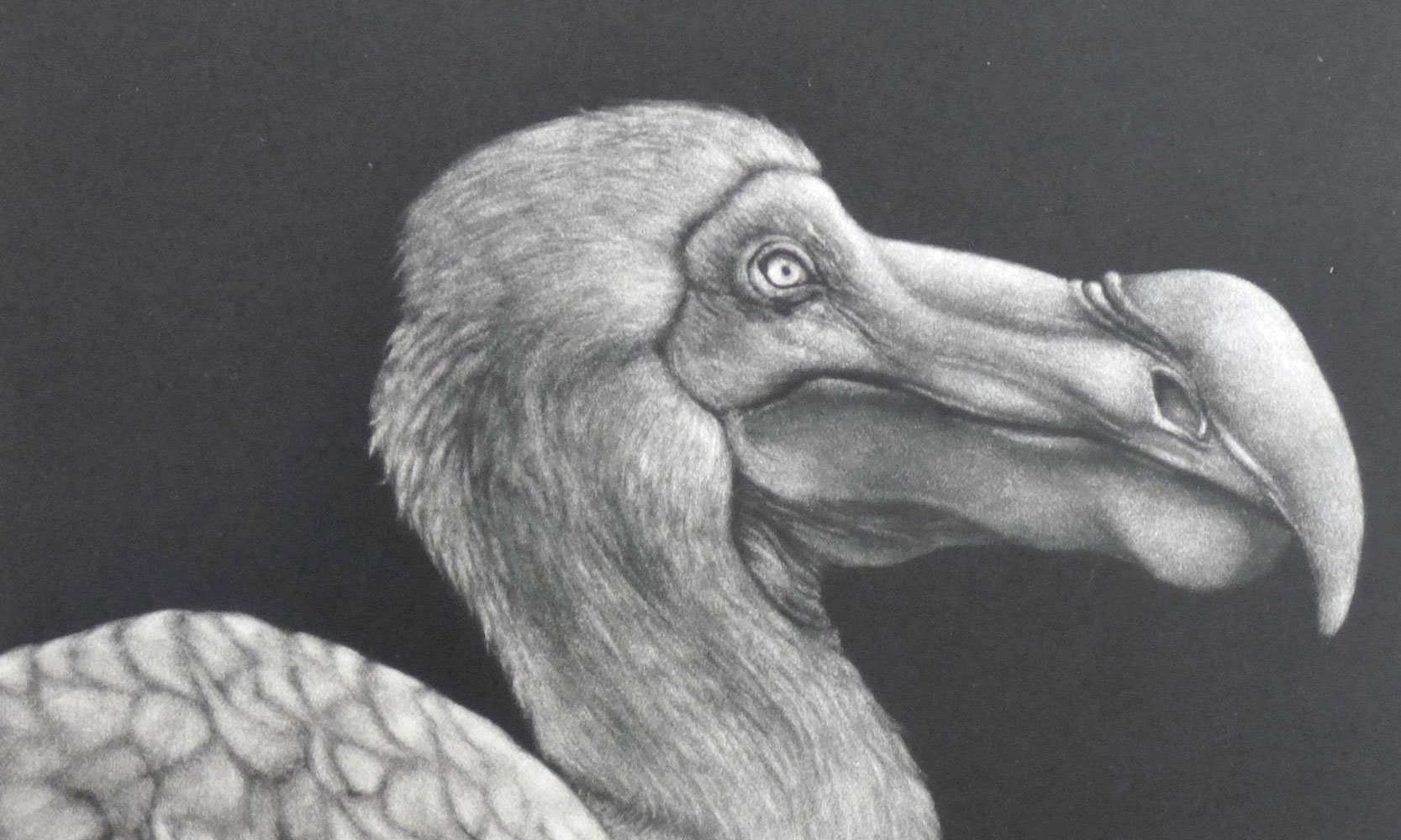Sarah Kelleher considers how Aoife Layton’s highly theatrical compositions underscore our uneasy relationship with the natural world

Aoife Layton’s striking images of birds, monkeys and solitary children are distinctive for their dramatic chiaroscuro – the compelling interplay between rich, velvety black, pure white and delicate gradation of tones in between. In Mascot for the Anthropocene (Fig 1), for example, the head of a dodo in noble profile emerges from an enigmatic, unreadable darkness, the intricacy of its beak and feathers described in the subtlest of opposing tones of light and dark. This mysterious, luminous quality is particular to Layton’s chosen medium, mezzotint, known lyrically in French as la manière noire, or the dark manner. The term reveals its meaning. A mezzotint – from the Italian mezzo (half) and tinta (tone) – presents halftones. Specifically, in this type of printmaking, the plate is worked from dark to light. Shape and form are created by buffing down the roughened copper plate to reveal lighter areas and the image is formed from transition between areas of light and shade rather than lines.